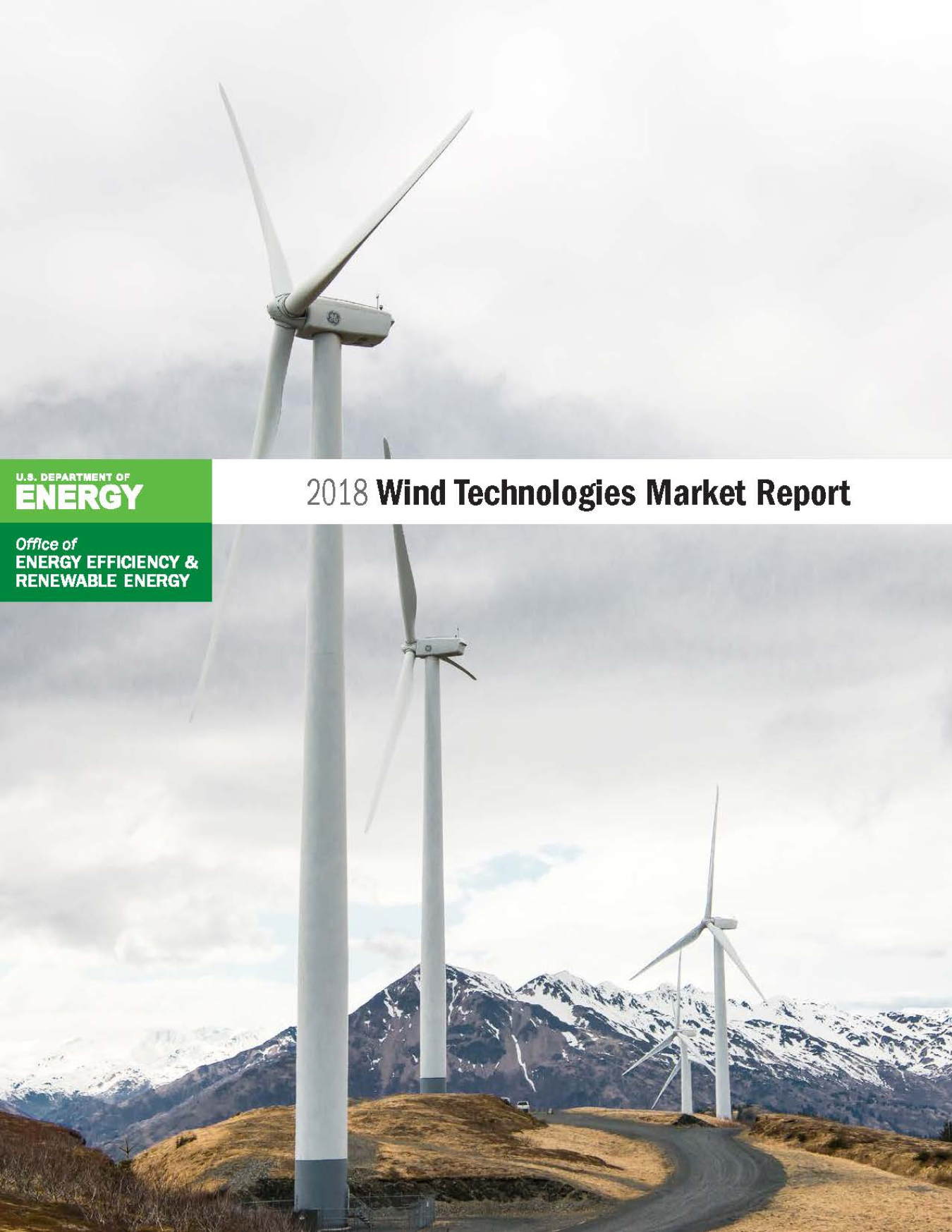The 2018 Wind Technologies Market Report summarizes the major trends in the U.S. wind power market in 2018.
Wind Energy Technologies Office
August 6, 2019The 2018 Wind Technologies Market Report—now in its thirteenth consecutive year—provides an overview of developments and trends in the U.S. wind power market, with a particular focus on the year 2018.
Download the full 2018 Wind Technologies Market Report.
Key Findings:
- Wind capacity additions continued at a robust pace, with 7,588 megawatts (MW) added in 2018 and significant new builds anticipated in the near-term.
- Wind energy supplies more than 10% of total electricity generation in 14 states and more than 30% in three of those states.
- The U.S. supply chain is diverse and multifaceted, with strong domestic content for nacelle assembly, towers, and blades.
- Wind sector employment reached a new high of 114,000 full-time workers.
- Wind turbines continue to increase in size; the average generating capacity of newly installed wind turbines in the United States in 2018 was 2.4 MW and the average rotor diameter was 116 meters. Permit applications suggest that much taller turbines are on the way.
- Turbine scaling is significantly boosting wind project performance. The average capacity factor among projects built in the last few years was 42%, compared to an average of 31% among projects built from 2014 to 2011.
- Low wind turbine pricing continued to push down installed project costs.
- Wind energy prices are at historic lows—below 2 cents per kilowatt-hour. Recently signed wind energy contracts compare favorably to projections of the fuel costs of gas-fired generation.
- The levelized cost of wind energy—which allows the comparison of technologies with different lifespans, sizes, and initial capital costs—also hit an all-time low, averaging $38 per megawatt-hour.
- While significant U.S. wind capacity additions are expected to continue for the next couple years, growth in the medium-term remains uncertain as the Production Tax Credit is phased out.


